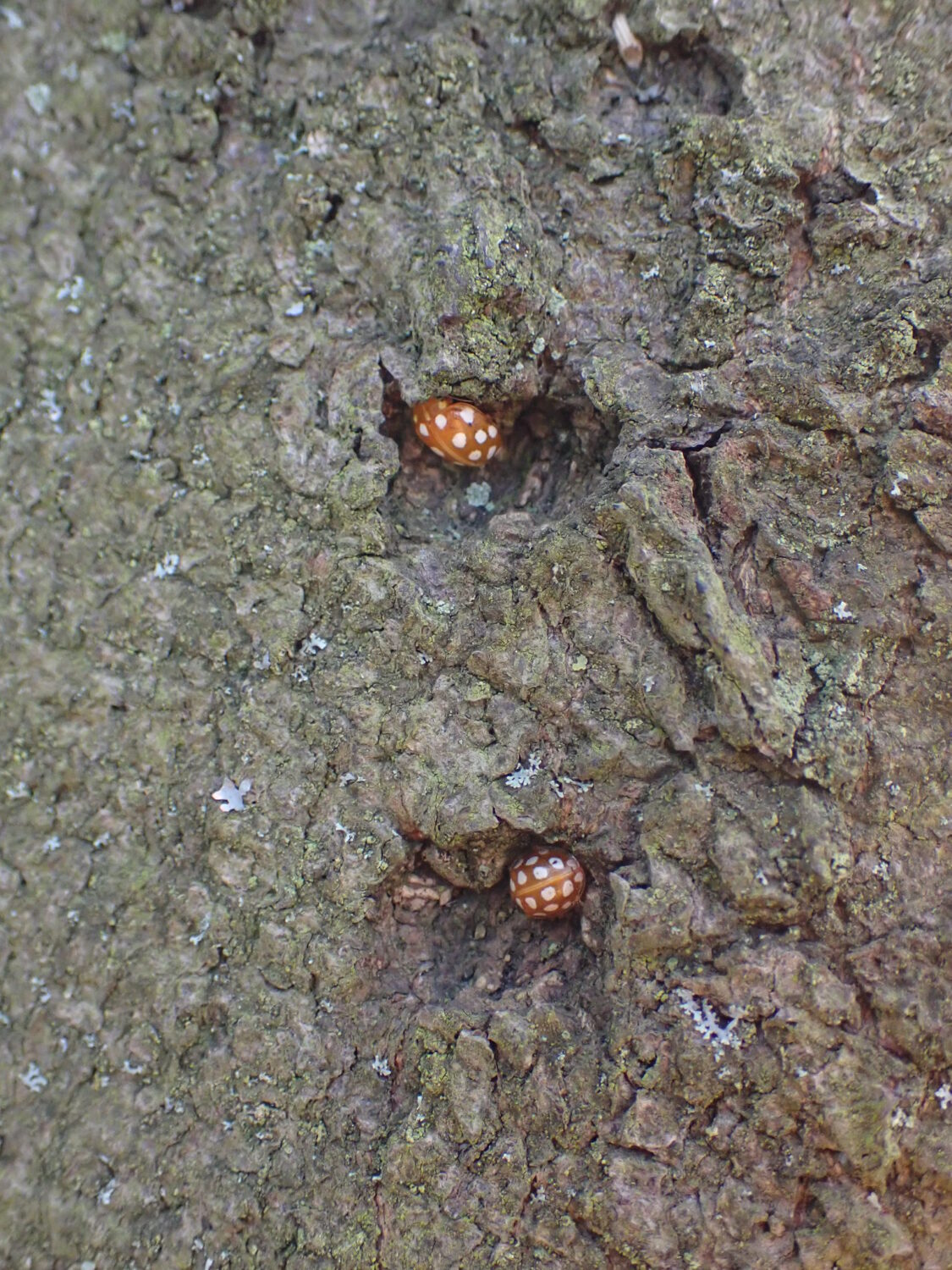Local naturalist, Charlotte Rankin, provides a short guide to ladybird spotting across the North East this spring and summer.
While bees are often found flying and foraging busily on flowers, ladybirds are most often found amongst vegetation, either sunbathing or wandering across leaves and bark in search for food. While they don’t buzz around in the ways bees do, ladybirds can fly as far as one kilometre to find food and suitable habitat. From trees and shrubs to more obscure places such as stonework and windowsills, ladybirds can be found in a great variety of places. Early spring is a good time to observe ladybirds dispersing from their overwintering quarters. Throughout spring and summer, ladybirds can be found searching for food, mates and egg-laying sites.

Shrubs
When the sun is shining, evergreen shrubs, such as Cherry Laurel and Ivy, are great places to look out for ladybirds. You will often find them resting on sunlit leaves to warm up.
Parks, cemeteries and churchyards provide a range of habitats for ladybirds including shrubs, trees and grassy areas.
Shrubs with dense foliage, such as Gorse, also provide suitable habitat to spend the winter.

Trees
Ladybirds are often found on the bark of trees. Urban deciduous trees can support a diversity of ladybird species due to the higher aphid abundance.
Sycamore, Lime and Birch are thought to be the most favourable deciduous trees for ladybirds. Once associated with ancient woodland, the Orange Ladybird has also adapted to feed on Sycamore.
Coniferous trees also support ladybirds specialist on conifers. The Pine Ladybird is the most common ladybird to be found on conifers. However, this ladybird is also found on a great range of deciduous trees.
Overwintering ladybirds can also be found within tree cavities and under bark. Early in spring, dispersing ladybirds can be found in high numbers on tree trunks.

Herbaceous vegetation
Grassy areas may have a high abundance of aphids to support a range of ladybird species. Grassy areas also provide habitat for grassland ladybirds such as the 14-spot and 22-spot Ladybird.
Ladybirds lay their eggs close to aphids, often on the underside of a leaf. You will often find ladybirds wandering across leaves in search of food or a suitable egg-laying site.
Some species, such as the 22-spot Ladybird, feed on mildew found on leaves. This species favours umbellifers, particularly Hogweed.

Stonework
Overwintering ladybirds can be found clustered in nooks and crannies of stonework, particularly gravestones and stone sculptures. Ladybirds of different species can often be found overwintering together. When warm enough in spring, you may find ladybirds dispersing from these nooks and crannies.
Aggregating may provide protection or help ladybirds to find a mate when spring comes around.

Indoors
Some ladybirds, particularly the Harlequin, move to buildings to overwinter and find shelter. They will hibernate in small cracks away from the harsher winter conditions.
In spring, Harlequins are often found wandering across windowsills having come out of dormancy.

Join the North East Ladybird Spot
Urban or rural, beginner or expert, we need your help to record ladybirds across the North East this spring and summer.
Your records can add to our understanding of ladybirds in the region and inform conservation and monitoring efforts.
Taking part is easy and every record counts, wherever you live in the region. Records of all ladybird species are encouraged.